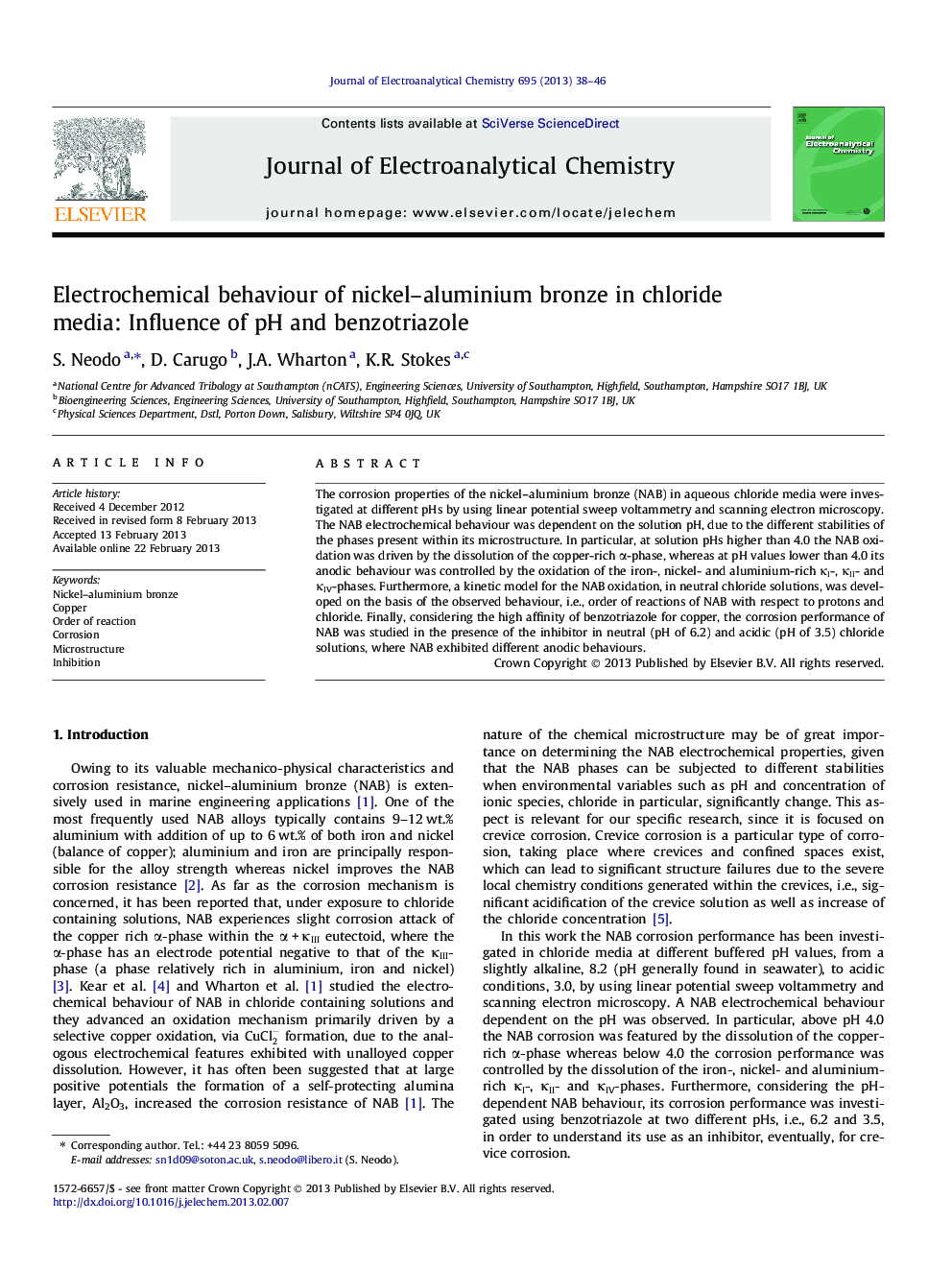| Article ID | Journal | Published Year | Pages | File Type |
|---|---|---|---|---|
| 219106 | Journal of Electroanalytical Chemistry | 2013 | 9 Pages |
The corrosion properties of the nickel–aluminium bronze (NAB) in aqueous chloride media were investigated at different pHs by using linear potential sweep voltammetry and scanning electron microscopy. The NAB electrochemical behaviour was dependent on the solution pH, due to the different stabilities of the phases present within its microstructure. In particular, at solution pHs higher than 4.0 the NAB oxidation was driven by the dissolution of the copper-rich α-phase, whereas at pH values lower than 4.0 its anodic behaviour was controlled by the oxidation of the iron-, nickel- and aluminium-rich κI-, κII- and κIV-phases. Furthermore, a kinetic model for the NAB oxidation, in neutral chloride solutions, was developed on the basis of the observed behaviour, i.e., order of reactions of NAB with respect to protons and chloride. Finally, considering the high affinity of benzotriazole for copper, the corrosion performance of NAB was studied in the presence of the inhibitor in neutral (pH of 6.2) and acidic (pH of 3.5) chloride solutions, where NAB exhibited different anodic behaviours.
► The electrochemical properties of NAB were studied in 0.6 M NaCl at different pHs. ► The NAB electrochemical behaviour was found to be strongly influenced by pH. ► In neutral pHs NAB oxidation was controlled by copper dissolution of α-phase. ► In acidic pHs NAB oxidation was controlled by iron or nickel dissolution of κ-phases. ► The influence of benzotriazole on NAB behaviour was studied at acidic and neutral pHs.
